On the occasion of Gandhi’s 148th Jayanti (birthday), one of only three national holidays in India, questions and protests continue to mount around the glorification of a man popularly considered the “Father of India.”
Statues of Gandhi have sparked demonstrations by Indian diaspora members around the globe, while his legacy is challenged by scholars and human rights activists in India and abroad. Yet, on October 2, Indian ambassadors throughout the world hailed the Hindu ascetic as a “Mahatma” (Great Soul) while garlanding his statues in a celebration of legacy; meanwhile, within the Republic of India, the nation’s ruling political leaders are bowing to Gandhi.
As the Bharatiya Janata Party’s (BJP) president, Amit Shah, launched a series of yatras (processions) throughout the State of Gujarat to drum up support for his party in advance of the upcoming Gujarat Legislative Assembly elections, he spoke at Kirti Mandir, a temple to Mohandas Gandhi built on the site of his birthplace in Porbandar, Gujarat.
“The vision of Mahatma Gandhi seems to be more relevant now than that time,” declares Shah in Porbandar. Referring to Gandhi by his honorific title, Mahatma, the head of the far-right Hindu nationalist BJP continues, “The message of Gandhi ji has the capacity to solve all the problem of the nation and the world. We should take oath to follow the footstep of Mahatma Gandhi.”
In New Delhi, BJP Prime Minister Narendra Modi visited Raj Ghat, the memorial constructed on the site of Gandhi’s 1948 assassination. “I bow to beloved Bapu [father] on Gandhi Jayanti,” states Modi. “His noble ideals motivate millions across the world.”
After the BJP assumed national power in 2014, with Modi taking the helm as Prime Minister, many intellectuals and political figures suggested it represented a renunciation of Gandhi’s vision. Famously linked to the ideas of ahimsa (a principle of nonviolence) and satyagraha (a method of nonviolent resistance), in 1924 Gandhi served as 43rd president of the Indian National Congress (INC), a centre-left party which is today the BJP’s chief political adversary. Some, however, posit a synthesis between the two.
“Modi, the new Prime Minister of India, proved he was a diligent disciple of the Mahatma,” says Booker Prize winning author Arundhati Roy. “All Modi’s pronouncements, many as the Chief Minister of Gujarat, were delivered from the Mahatma Mandir. While the Left often thinks of Gandhi as a bulwark between the Hindu right and moderation, actually, particularly on the issue of caste, Gandhi was the Hindu right.”
Gandhi was a relentless proponent of the continuation and expansion of the caste system, argues Roy. Furthermore, referencing the 21 years during which Gandhi lived and worked in South Africa as an attorney, she remarks, “His views on race presaged his views on caste…. What happened in South Africa continues to have serious implications for the Indian community.”
“The shadow of caste and its stigma follows an individual from birth till death, affecting all aspects of life from education, housing, work, access to justice, and political participation,” warns United Nations Special Rapporteur Rita Izsák. She explains that caste “refers to a strict hierarchical society… in which individuals placed at the bottom of the system may face exclusion and discrimination in a wide range of areas…. Its existence is linked to the religiously sanctioned social structure of Hinduism.”
Meanwhile, South Africans like journalist Sentletse Diakanyo are speaking out against the actions Gandhi took in their country. “The greatest injustice against the struggle for liberation of black people was the projection of Mahatma Gandhi as committed to a cause against segregation,” writes Diakanyo. “Gandhi held an absurd belief that Indians, along with whites, were a superior race to black people… He conspired with the oppressive white government in promotion of segregation of black people and elevating the importance of Indians above them.”
An analyst of South Asian Affairs, Pieter Friedrich says Gandhi first promoted racial segregation in South Africa before transitioning to a defense of the caste system in India.
“Gandhi returned to India from South Africa around the same time as the deprivations resulting from the practice of the caste system were gaining attention on the world stage,” remarks Friedrich. “As a sharp-witted attorney, Gandhi understood it was to his political advantage to present himself as opposed to so-called ‘caste discrimination,’ so he adopted opposition to the system’s creation of ‘outcastes’ or ‘Untouchables’ as a pet issue. Meanwhile, however, he doubled down in defense of the existence of the caste system, insisting it ‘creates a social and moral restraint.’ Gandhi’s promotion of caste in India can be understood in context of his earlier demands for racial segregation of Africans from Indians in what is today known as South Africa.”
Friedrich points to an 1895 incident in Durban, South Africa. The city was part of a large region of modern-day South Africa which was colonized by the British Empire between 1795 and 1910.
Roy calls the incident “the Durban Post Office problem.”
Identifying his complaint, Gandhi writes in 1895, “In the Durban Post and telegraph offices there were separate entrances for natives and Asiatics and Europeans. We felt the indignity too much and many respectable Indians were insulted and called all sorts of names by the clerks at the counter. We petitioned the authorities to do away with the invidious distinction and they have now provided three separate entrances for natives, Asiatics, and Europeans.” [Note: All quotes by Gandhi can be found by date in Collected Works of Mahatma Gandhi
“In short,” explains Bhajan Singh, “Gandhi used his profession as an attorney to pursue institution of a three-tiered caste-like system in pre-apartheid South Africa. People called ‘coloreds’ were segregated from white people, but Gandhi didn’t object to racial segregation. Instead, the so-called Mahatma objected to upper-caste Indians being grouped with Africans. He felt degraded by being treated on par with native Africans and worked to construct a wall of separation between Africans and Indians.”
Singh, who serves as Founding Director of Organization for Minorities of India (OFMI), has participated in several campaigns pleading for a global reevaluation of Gandhi. In particular, he wants to see removal of Gandhi statues which have cropped up throughout the world. At an Oct. 2, 2016 demonstration against installation of a Gandhi statue in the city of Davis, California, Singh states, “We are against Gandhi, who was the prelude, the father of apartheid…. His racism. You cannot close your eyes to his racism.”
Protests against Gandhi statues first came to public attention in 2003 after a statue of the iconic activist was unveiled in Johannesburg, South Africa. According to a report by The Guardian:
“A new statue of Mahatma Gandhi in Johannesburg has triggered a row over his alleged contempt for black people….
“Newspapers continue to publish letters from indignant readers: ‘Gandhi had no love for Africans. To [him], Africans were no better than the “Untouchables” of India,’ said a correspondent to The Citizen.
“Others are harsher, claiming the civil rights icon ‘hated’ black people and ignored their suffering at the hands of colonial masters while championing the cause of Indians.”
Since then, a wave of protests has erupted on at least three continents.
In 2010, for instance, members of the Dalit (a self-adopted name for those treated as “Untouchables” by the caste system) community rallied to protest installation of a Gandhi statue on the campus of the University of Michigan in the city of Flint. “Over 250 million people, even today, suffer because of Gandhi’s policies,” says demonstrator Raj Kamble. “He was against the humanity. Against equality.”
Subsequently, in 2013, OFMI gathered with local Indian diaspora members to demand removal of a statue in Cerritos, California. As reported by The Los Angeles Times, the demonstration “holds that Gandhi perpetuated the caste system.” Speaking to the city council, Bhajan Singh declared, “You promoted a piece of racial hatred.” Additional protests cropped up in San Francisco and Fresno. Meanwhile, in Johannesburg, South Africans demonstrated against the statue in 2015. While protestors bore signs reading, “Racist Gandhi must fall,” BBC News reports that 21-year-old Molese Maile threw white paint on the statue.
The hashtag #Ghandimustfall (sic) trended on Twitter the following year when faculty and students at University of Ghana generated a grassroots campaign demanding removal of a Gandhi statue installed on the campus in June 2016. “There is a problem with the statue in the sense that Gandhi has a racist past,” remarks professor of law Dr. Kwadwo Appiagyei. “In a situation or an environment where we champion the cause of equality — racial equality — I don’t think that this statue has a place here. But the racist past is what we think should be exposed for the world to know, because there seems to be a gloss over that aspect of his life. As long as it affects blacks, especially when he lived in South Africa.”
The Ghana protest garnered international attention. It also gained so much traction that university officials backed down and consented to the demands of protestors. As reported by Time magazine in Oct. 2016, “Ghana has said it will remove a statue of Mahatma Gandhi from a university campus in the nation’s capital where it had sparked protests over the leader’s allegedly racist attitudes.”
“Unlike racism and apartheid, caste is not color-coded and isn’t easy to see,” warns Roy in a 2014 lecture at Columbia University. “Caste is not the same as race, but casteism and racism are both forms of discrimination that target people because of their descent. To support caste is very much like supporting racism or apartheid.”
“The upper-caste Gandhi is popularly perceived as a heroic figure who attacked the caste system,” comments Arvin Valmuci. A member of the Dalit community who serves as a spokesperson for OFMI, Valmuci claims that Gandhi entrenched caste. “The only reason many people think Gandhi was against caste is because of the work of propagandists. He said ‘caste is scientific.’ He said the ‘law of heredity’ which threatens us with death for denying to be slaves of the higher castes, generation after generation and in perpetuity, is ‘not based on inequality.’ He gave us the label of ‘Harijans,’ a word used for bastard children of temple prostitutes, and deceived the world as though he were giving the downtrodden Dalits a high honor.”
Gandhi did indeed, as Valmuci claims, insist that caste is a scientific concept. In 1933, he writes, “The caste system, in my opinion, has a scientific basis. Reason does not revolt against it.” Gandhi seemed to view caste as a necessary regulatory factor for society. Gandhi continues, “Caste creates a social and moral restraint — I can find no reason for their abolition…. I don’t believe the caste system to be an odious and vicious dogma.”
As a public figure, Gandhi consistently promoted caste as a force for good. In 1920, for instance, he writes, “Caste has saved Hinduism from disintegration.” Although the hierarchical caste system teaches that the four castes — Brahman, Kshatriya, Vaishya, and Shudra — are ranked according to value, and that the Shudra’s duty in life is to serve the other three castes, Gandhi claims, “The caste system is not based on inequality…. The law of heredity is an eternal law.” Praising the practice of treating people as “outcastes,” he wrote, “Excommunication by the caste is a mode of punishment and ought to be available to every community.” Furthermore, in 1921, he defended both the hereditary nature of caste and the practice of caste segregation, writing, “I believe that one acquires one’s caste by birth. One who is born in a Brahman family dies a Brahman…. The prohibition as to dining with or marrying a person of another varna or another religion is an essential protective fence for its culture put up by Hinduism.”
Summarizing his views in 1927, Gandhi writes, “Brahmanism is synonymous with Hinduism.”
Describing the caste system, Roy asks, “How is it that the practice of caste in India, this most brutal mode of hierarchical social organization that human society has known, has managed to escape scrutiny?” She further expresses shocked disbelief at the popular perspective on Gandhi, asking, “And how is it that one of its most ardent supporters has come to be seen as the saint of the modern world?” Explaining his consistency, she states, “The contention is that Gandhi changed his mind later on. He didn’t, really. Right to the end of his days, he believed in Varnashrama Dharma [the caste system and duties of the castes].”
“The real ‘Father of India’ was Dr. Ambedkar,” remarks Bhajan Singh. Dr. Bhim Rao Ambedkar, born as a so-called Untouchable in Maharashtra, was a contemporary of Gandhi who rose to prominence as the leader of the Dalit Civil Rights Movement in the 1920s and became a key figure in India’s Independence Movement. “It is totally shameful that the upper-caste Gandhi, who defended caste, is projected by propaganda as the champion of the Dalits. They had their own champion who was born within their own community. Dr. Ambedkar is the true hero of India’s downtrodden people, the indigenous communities known as the Mulnivasi, and his goal was the annihilation of caste.”
Ambedkar, in fact, earned Gandhi’s wrath. “As I met Mr. Gandhi in the capacity of an opponent, I’ve a feeling that I know him better than most other people, because he opened his real fangs to me,” remarks Ambedkar in a 1955 interview. According to Ambedkar, Gandhi’s public approach involved speaking differently to different audiences. “In the English paper, he posed himself as an opponent of the caste system and untouchability and that he was a democrat,” says Ambedkar, “but if you read his Gujarati magazine, you will see him the more orthodox man, supporting the caste system (the varnashrama dharma) and all the orthodox dogmas that have kept India down through the ages.”
In 1931, Gandhi claims, “I claim myself in my own person to represent the vast mass of Untouchables.” Yet he simultaneously sought to propagate the practice of caste. Meanwhile, Ambedkar suggested that the practice of Untouchability — against which Gandhi is often pitted — is the result of Hindu orthodoxy. “We practice casteism, we observe untouchability, because we are asked to do it by the Hindu religion in which we live,” states Ambedkar in 1936. “For annihilating castes and untouchability from among the Untouchables, change of religion is the only antidote.” In 1945, he explains, “There is one thing which Hinduism has never been able to do — namely to adjust itself to absorb the Untouchables or to remove the bar of untouchability.”
“Like many Hindu reformers, [Gandhi] campaigned against untouchability, which is the performative end of caste,” states Roy. Yet, inasmuch as Gandhi actually stood against untouchability, Roy suggests it was irrelevant unless he also stood against caste. “Actually, caste is about entitlement. Caste is about your access to resources. Caste is about your right to study. Caste is about your access to water and land. These things, Gandhi never questioned.”
Ambedkar seems to offer a more cynical interpretation of Gandhi’s actions than does Roy. “Gandhi was absolutely an orthodox Hindu,” declares Ambedkar in 1955. “He was never a reformer. He had no dynamics in him.” Although Gandhi, as Valmuci and Singh explain, is popularly portrayed as campaigning against untouchability, Ambedkar suggests it was a calculated political tactic. Comparing Gandhi to American abolitionist William Lloyd Garrison, Ambedkar identifies a complete contrast between the two. As he says,
“All this talk about untouchability was just for the purpose of making the Untouchables drawn into the Congress. That was one thing. Secondly, he wanted that Untouchables would not oppose his movement of Swaraj [independence]. I don’t think beyond that he had any real motive of uplift. He wasn’t like Garrison in the United States, who fought for the Negroes.”
Friedrich, who perceives a pattern of consistency between Gandhi’s alleged racism in South Africa and his defense of caste in India, also claims incompatibility between Ambedkar and Gandhi. Speaking at Columbia University in 2013, as India Abroad reports, Friedrich states, “Ambedkar and Gandhi mix as well as oil and water, sand and fire, cats and dogs, or snakes and babies. In other words, they don’t go together. They are irreconcilable…. On the one hand, Dr Ambedkar stood for the annihilation of caste. On the other hand, Gandhi stood for the perpetuation of caste.”
Ambedkar himself directly rejected Gandhi, particularly his honorific title. “He was never a Mahatma and I refuse to call him Mahatma,” says Ambedkar “I’ve never in my life called him Mahatma. He doesn’t deserve that title, not even from the point of view of his morality.”
Gandhi’s morality has been the subject of growing discussion over recent years. At the 2016 protest agains the Davis Gandhi statue, The Sacramento Bee reports, “Gandhi was also called a pedophile by many in the crowd for sleeping nude with his teenage grandnieces to test the strength of his vow of chastity.” Speaking bluntly, former Yuba City councilor Tej Man said, “Gandhi was a child molester.”
“Gandhi used his position to sexually exploit young women,” writes Indian feminist Rita Banerji. “It is a fact. Gandhi had young women in his ashram, some of them still teenagers, one of them his own grand-niece (Manu Gandhi), sleep naked with him in his bed at night.” Gandhi claimed it was part of his infamous “sexual experiments” to test the effectiveness of his Brahmacharya (celibacy) vow. Banerji, however, perceives it differently. Elaborating on the shocking information, Banerji explains,
“I saw Gandhi as a classic example of a sexual predator — a man who uses his position of power to manipulate and sexually exploit the people he directly controls.
“Most angering for me, was reading about the psychological and emotional trauma of the girls and women who he used for his ‘experiments’, which is what he called these incidents. The word ‘psychotic’ repeatedly came up in various documents with regards to these women’s mental state. The women, most of whom were in their late teens or early twenties (not surprisingly, given he could have ‘experimented’ with the older women or even his own wife!) were repeatedly described as depressed and weeping, and seemed to be completely in his control.”
Historical evidence of Gandhi’s “experiments” abounds. Writings by his close associates such as Nirmal Kumar Bose, Swami Anand, Vallabhai Patel (India’s first Deputy Prime Minister), and J. B. Kripalani (INC President in 1947), all express surprise and dissent about Gandhi’s behavior with young women — especially his 18-year-old grandniece, Manu. Most notably, his personal secretary, R. P. Parasuram, quit in direct protest over the issue. In a 16-page letter to Gandhi dated January 1, 1947, Parasuram writes,
“When [at] first I came to the ashram, I came with high respect for the ashram and its inmates and its way of life. All that was knocked off in 24 hours. After coming here I must confess to having lost a portion of the respect I had for you. You are the Father of our Nation…
“I object to your sleeping in the same bed with members of the opposite sex…. One day Amin-bhai came and told me that he was shocked to see Manu [Manu Gandhi — Gandhi’s own grand niece] getting into your bed….
“Apart from the question of any affect on you, what about the effect on girls?
“There is something of other wrong with them [the women who sleep naked with Gandhi]. [The] Punjabi girl who lived opposite my room in Matunga. She used to weep unrestrainedly and that not caring whether others saw her or not. She laughed also unrestrainedly. And then here is Dr. Sushila-behn [the 24-year-old in-house physician at the ashram who Gandhi also used for his ‘experiments’]. How many are the days when she has not wept? She is a doctor and yet she is always a patient, always is ill. Who has heard of a doctor who cries out at night? …
“As for blood relations [this is in reference to Manu Gandhi]. The world is sceptic even there. There have been cases of immorality between father and daughter, brother and sister.”
To all this, Friedrich adds a twist. “Gandhi was living in South Asia, far removed from the modern history of events in Europe with which most Westerners are familiar,” says Friedrich. “Yet one of the lesser known actions of Gandhi is his correspondence with Adolf Hitler during the height of the Second World War and, subsequently, his horrifying remarks suggesting that Jews should have responded to the Nazi Fuhrer’s Holocaust by passively offering themselves up to death instead of resisting.”
In a lengthy December 1940 letter to Hitler, Gandhi begins “Dear Friend,” explaining, “That I address you as a friend is no formality.” He continues, “We have no doubt about your bravery or devotion to your fatherland, nor do we believe that you are the monster described by your opponents.” Expressing some disagreement with the Fuhrer, he compares the Nazis to the British. “Ours is a unique position. We resist British Imperialism no less than Nazism. If there is a difference, it is in degree.” He closes by appealing to Hitler to end armed conflict, writing, “I, therefore, appeal to you in the name of humanity to stop the war and adopt a path of nonviolence.”
However, in July 1940, Gandhi penned a more elaborate “appeal to every Briton,” alleging, “Your soldiers are doing the same work of destruction as the Germans.” In a detailed passage, he advises the British to submit to Nazi Germany’s assaults on their homeland, stating,
“I want you to fight Nazism without arms, or, if I am to retain the military terminology, with non-violent arms. I would like you to lay down the arms you have as being useless for saving you or humanity. You will invite Herr Hitler and Signor Mussolini to take what they want of the countries you call your possessions. Let them take possession of your beautiful island, with your many beautiful buildings. You will give all these, but neither your souls, nor your minds. If these gentlemen choose to occupy your homes, you will vacate them. If they do not give you free passage out, you will allow yourself, man, woman and child, to be slaughtered, but you will refuse to owe allegiance to them.”
Neither the British nor Hitler heeded Gandhi’s appeal, of course. When the war concluded with Germany’s defeat, the full extent of Hitler’s crimes against the Jews came to light. In 1947, after learning of the millions who had been murdered in death camps, Gandhi offered an unusual perspective on the Holocaust.
“Hitler killed five million Jews,” remarks Gandhi. “It is the greatest crime of our time.” Yet, rather than simply denouncing the Holocaust as an unparalleled tragedy, he suggested the victims had died without heroism because they did not voluntarily submit to their murder. Paraphrasing Gandhi’s perspective, George Orwell writes, “Gandhi’s view was that… the Jews had been killed anyway, and might as well have died significantly.” Specifically, Gandhi says,
“The Jews should have offered themselves to the butcher’s knife. Thy should have thrown themselves into the sea from cliffs. I believe in hara-kiri. I do not believe in its militaristic connotations, but it is a heroic method. Yes, that would have been heroism [if the Jews committed collective suicide]. It would have aroused the world and the people of Germany to the evils of Hitler’s violence, especially in 1938, before the war. As it is they succumbed anyway in their millions.”
On November 20, 1938, at the outset of the Holocaust, Gandhi also detailed his views about the Jews. In historical context, the Nazis had just staged the Kristallnacht pogrom on November 9-10, killing 91 Jews, destroying hundreds of synagogues and thousands of Jewish-owned businesses, and sending 30,000 Jews to concentration camps. Throughout the year, the regime had established three concentration camps — Flossenburg, Neuengamme, Mauthausen — and begun construction of the infamous Ravensbruck camp. Approximately half the population of German Jews had already fled the country. Yet Gandhi, in his advice, suggested the Jews stay, stand their ground, and embrace “voluntary suffering.” As he writes,
“If I were a Jew and were born in Germany and earned my livelihood there, I would claim Germany as my home even as the tallest gentile German may, and challenge him to shoot me or cast me in the dungeon; I would refuse to be expelled or to submit to discriminating treatment. And for doing this, I should not wait for the fellow Jews to join me in civil resistance but would have confidence that in the end the rest are bound to follow my example. If one Jew or all the Jews were to accept the prescription here offered, he or they cannot be worse off than now. And suffering voluntarily undergone will bring them an inner strength and joy…. The calculated violence of Hitler may even result in a general massacre of the Jews by way of his first answer to the declaration of such hostilities. But if the Jewish mind could be prepared for voluntary suffering, even the massacre I have imagined could be turned into a day of thanksgiving and joy.”
Gandhi was assassinated in 1948 by Nathuram Godse, a Hindu extremist who found Gandhi’s views to be overly moderate. During his life, he was nominated for a Nobel Peace Prize five times, but rejected every time. According to a report by the Nobel Peace Prize Committee, “Gandhi was nominated in 1937, 1938, 1939, 1947 and, finally, a few days before he was murdered in January 1948.” He made the “short list” thrice — in 1937, 1947, and 1948.
On the first occasion, in 1937, the committee’s adviser, Professor Jacob Worm-Müller, provided a cautionary report about Gandhi which led to his rejection. For instance, he writes, “One might say that it is significant that his well-known struggle in South Africa was on behalf of the Indians only, and not of the blacks whose living conditions were even worse.” He describes “sharp turns in his policies, which can hardly be satisfactorily explained by his followers.” According to the committee’s 1999 report on why Gandhi was rejected:
“Gandhi had many critics in the international peace movement. The Nobel Committee adviser referred to these critics in maintaining that he was not consistently pacifist, that he should have known that some of his non-violent campaigns towards the British would degenerate into violence and terror. This was something that had happened during the first Non-Cooperation Campaign in 1920-1921, e.g. when a crowd in Chauri Chaura, the United Provinces, attacked a police station, killed many of the policemen and then set fire to the police station.”
On the second occasion, in 1947, three of the five committee members voted against Gandhi. One of them, Chairman Gunnar Jahn, writes, “Plenty of good things could be said about him — we should remember that he is not only an apostle for peace; he is first and foremost a patriot…. Moreover, we have to bear in mind that Gandhi is not naive. He is an excellent jurist and a lawyer.”
On the third occasion, in 1948, Gandhi was nominated while living but assassinated before the committee made its decision. They considered awarding the prize to him posthumously, yet only one of five committee members supported the decision. Again, he was rejected.
“We must ultimately ponder whether Gandhi’s views on race, caste, women, the structure of society, compassion for the suffering of others, or even the development of India into a right-wing Hindu nation were much different, except in degree, from those of Hindu nationalist politicians from the BJP,” remarks Friedrich.
Bhajan Singh is more blunt. “Gandhi advocated Brahmanism in South Africa and in India. Projecting him as a symbol of peace or equality is a slap in the face to every black African and everyone treated as an outcaste,” says Singh. “His beliefs are very much the foundation for the policies of the Hindutva soldiers who serve in the RSS.”
The Rashtriya Swayamsevak Sangh (RSS), founded in 1925, is the organization in which Modi got his start in public life before joining the BJP. The RSS endorses an ideology of Hindutva, which, reports the U.S. State Department, “holds non-Hindus as foreign to India.” According to Friedrich, “The originators of Hindutva ideology and the early leaders of the RSS all endorsed, in very direct language, the Nazi regime. Savarkar and Golwalkar were the worst offenders.”
In 1939, M.S. Golwalkar, the second and longest-serving leader of the RSS, writes,
“Non-Hindu people… must…. adopt Hindu culture and languages, must learn and respect and hold in reverence the Hindu religion, must entertain no ideas but of those of glorification of the Hindu race and culture. In a word, they must cease to be foreigners, or may stay in the country, wholly subordinated to the Hindu nation, claiming nothing, deserving no privileges, far less any preferential treatment — not even citizens’ rights.”
Expanding his philosophical ideas to policy suggestions, he praised the Holocaust, writing,
“To keep up the purity of the Race and its culture, Germany shocked the world by her purging the country of the Semitic Races — the Jews. Race pride at its highest has been manifested here Germany has also shown how well nigh impossible it is for Races and cultures, having differences going to the root, to be assimilated into one united whole, a good lesson for us in Hindusthan to learn and profit by.”
V.D. Savarkar, who invented the term “Hindutva,” was more succinct. In 1937, he says, “There is no reason to suppose that Hitler must be a human monster because he passes off as a Nazi…. Nazism proved undeniably the savior of Germany under the set of circumstances Germany was placed in.” Additionally, he states, “Hindus are bound together by the dearest, most sacred and most enduring bonds of a common Fatherland and a common Holyland, and these two being identified with one and the same country our Bharatbhumi, our India…. India must be a Hindu land, reserved for the Hindus.”
“Gandhi’s bizarre remarks about the Jews and his demand that the British lay down their arms and welcome being slaughtered by the Nazis, while understandable as a consistent extension of his satyagraha philosophy, are also revealing as to his perspective on the value of humanity,” says Friedrich. “His caste views and his racial views are not far off from those of the Nazis — except instead of annihilation of the ‘other,’ he only endorsed radical, legislated segregation by caste and by race. As India developed as an independent nation, whether under the INC or the BJP, it has perpetuated a similar intense and, considering the purported difference in party platforms, remarkably consistent pattern of anti-minority policies.”
Friedrich cites a range of incidents. “Consider INC Prime Minister Indira Gandhi’s 1970s ‘Emergency,’ when she forcibly sterilized millions of low-caste or Muslim citizens,” he says. “In the 1980s, she invaded the Sikh Golden Temple in Amritsar, killing thousands of civilians. After her death, the INC — the party of the so-called Mahatma — committed genocide against the Sikhs, slaughtering them in the streets of Delhi. Later, in Punjab in the 1990s, the INC continued a campaign of ethnic cleansing of the Sikhs. The BJP turned against Muslims in 1992 in the Babri Masjid destruction in Uttar Pradesh and especially in 2002, when Modi’s political allies orchestrated a genocide of Muslims and some Christians in the Mahatma’s home state of Gujarat. Later, the BJP targeted Christians in Odisha. Time and again, both major political parties of India have pushed casteist policies which lead to the subjegation and mass death of the downtrodden and minorities.”
Speaking in May 2017, Dr. Manisha Bangar similarly found little hope for the downtrodden in the policies of any of the major political players in India. “Hindutva means nothing but a sociopolitical structure of the society based on caste and varna with the Brahman on top,” says Bangar, who is the National Vice-President of the All India Backward and Minority Communities Employees Federation (BAMCEF). Identifying strains of Hindutva within every party, she remarks,
“The pseudo-nationalism of the Indian National Congress, the Communist Party of India, and Aaam Aadmi Party are all almost identical to the Hindutva brand of nationalism spread by the RSS and BJP. If the latter is brutal, the former is akin to slow poison. As such, the so-called secular progressivists in India can never become a force by which radical changes can be brought about to correct the country’s worsening sociopolitical scenario. On the surface, they appear to stand in opposition to the rightwing politics of the BJP and RSS, but just one layer down they stand in full support of the caste/varna system of graded inequality.”
Meanwhile, many international bodies perceive caste as a pervasive and prominent issue in modern India. In 2016, the United Nations warns, “Violence against Dalits is reported to be widespread and driven by the effects of the caste system and the lack of justice for victims.” Meanwhile, the International Dalit Solidarity Network reports, also in 2016, “Dominant castes in India are using violence against Dalits to reinforce the hierarchical caste related power structures and suppress Dalit rights assertions and claims…. Dalits are perceived as being ‘polluting’ to castes above them in the caste system, which continue to be practiced.” In 2014, Human Rights Watch explains, “Caste continues to be used to justify discriminatory, cruel, and inhuman treatment inflicted upon millions of Indians — especially in areas of rural India where caste-designation still dictates rigid roles and entitlements.”
“As Narendra Modi bows to Gandhi and praises his noble ideals, while Amit Shah takes an oath to follow in Gandhi’s footsteps and sees his message as more relevant now than in the past, we must ask, what was Gandhi’s message and what were his ideals,” says Valmuci. “Gandhi was, at the core, a devotee of caste, an architect of apartheid, a sexual predator who committed incest with his grandnieces, an apologist for the Holocaust, and need we go on? Ambedkar provides a moral example and worthy principles of rationalism for development of India, but Gandhi only provides a mask to conceal the crimes of the Indian State. He needs to be toppled.”


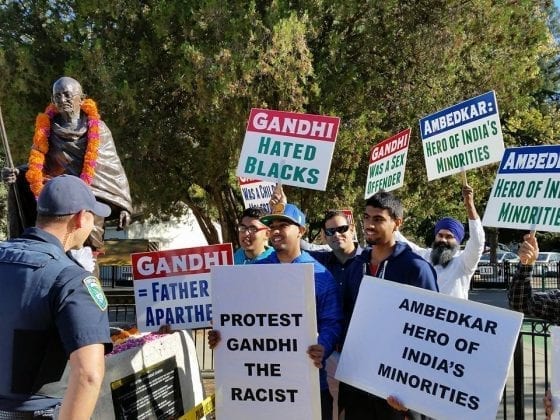

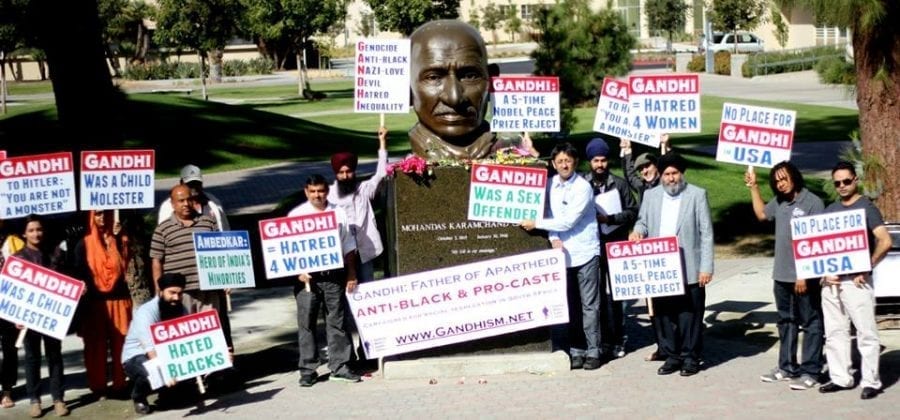
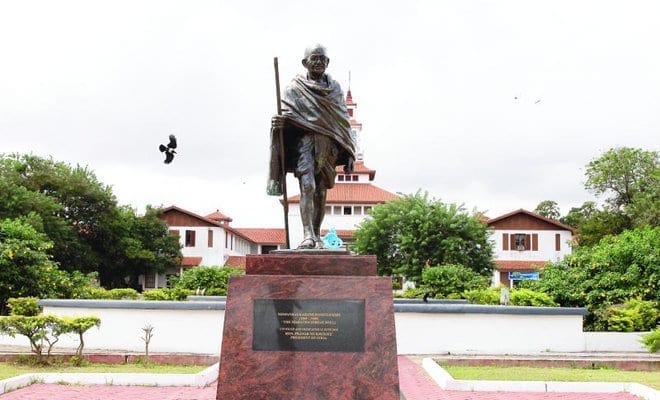
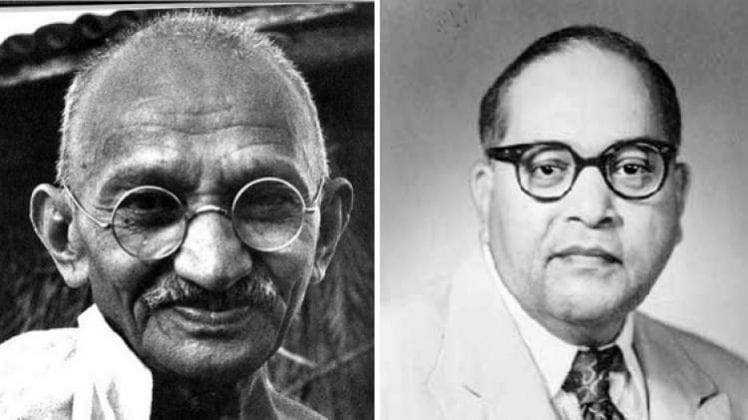
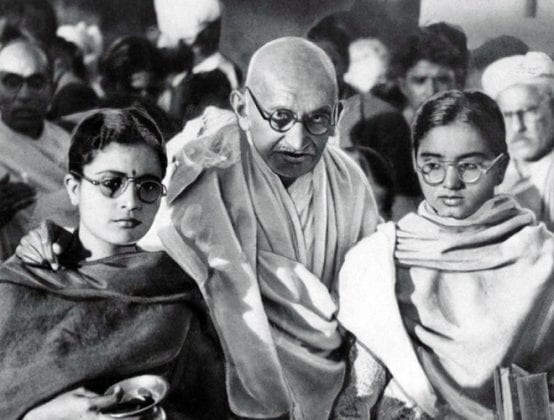
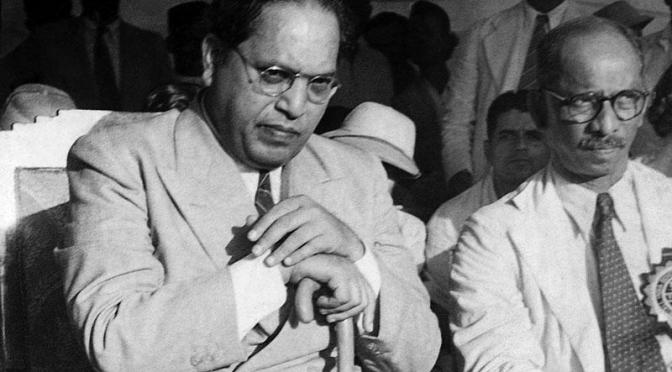
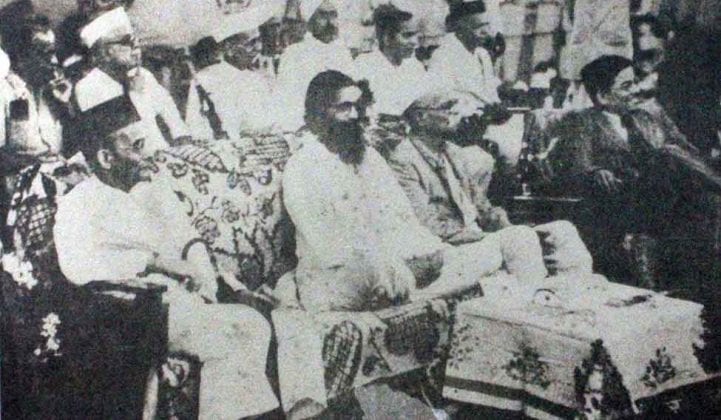


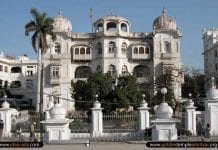


That little Gandhi was also pervert, sleeping naked with several young Girls at a time, then saying he trying to control his will.